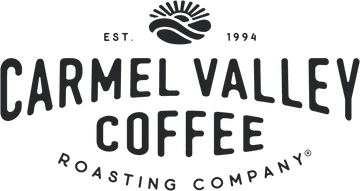
8 Tips For Brewing Coffee At Home
Become your own "Brewista" with our tips on how to brew delicious coffee from your kitchen to your office.
We firmly believe that coffee should be the least stressful part of your day. It should be a daily ritual that gives you joy. While brewing perfection is not needed, we have eight easy tips to follow that will ensure your coffee is delicious regardless of your brew method.
- Fresh, clean water is key.
It may surprise you, but coffee is actually 98% water. Thus, we cannot stress enough how important it is to use the best water possible when preparing it. Coffee extraction happens when hot (or cold) water is poured over coffee grounds. This process pulls the desirable combination of caffeine, carbohydrates, melanoidins, acids, and lipids from the grounds. The cleaner the water the fewer the impurities and the more pure the flavor.
Another important fact, cold water has more oxygen in it than warm or hot water. The oxygen in cold water will brighten the flavors in your cup, so if you are using filtered tap water, make sure you’re using the cold option.

- Water temperature is important.
The ideal temperature to brew coffee is between 195-205°F. Did you know you can scald coffee? Using water that is too hot results in coffee that is over-extracted, or bitter. On the opposite side, if the water isn’t hot enough the coffee will be under-extracted and watery.
If you are using a french press, the proper temperature can be achieved by letting the water rest for a moment after it boils. If you are using a pour-over or other manual brewing method, we recommend using water that is on the hotter side of the scale, about 200°F. When in doubt, use a thermometer!
- Take time to preheat your brewing vessel.
Such a simple thing, but it makes an important impact. If you’re pouring hot water into a cold brewing vessel it will immediately drop the temperature and can result in under-extracted coffee. Simply warming up your brewing vessel will prevent this from happening.
- Measuring your water and coffee will help achieve fullness & consistency.
The coffee to water ratio is really important to ensure you achieve the fullness of your coffee and consistent brewing results. This is roughly two tablespoons per 6 oz. of water depending on desired brew strength. For those that want to try being exact, the water-to-coffee ratio should be between 1:15 and 1:17 (15 to 17 grams of coffee to every gram of water) - a small scale will help for accurate measuring. Here are our recommendations per brew method:
Drip Coffee Maker:
- Standard ratio: 1:15 to 1:17 (one part coffee to 15-17 parts water)
- Example: For 1 liter of water, use about 60 grams of coffee.
French Press:
- Standard ratio: 1:12 to 1:15
- Example: For 1 liter of water, use 65-80 grams of coffee.
Pour Over (e.g., Chemex, V60):
- Standard ratio: 1:15 to 1:17
- Example: For 1 liter of water, use about 60 grams of coffee.
Aeropress:
- Standard ratio: 1:16 (for a regular strength cup)
- Example: For 240 ml of water, use 15 grams of coffee.
- For a stronger brew, use a 1:12 ratio.
Espresso:
- Standard ratio: 1:2 to 1:2.5
- Example: For a double shot (about 60 ml), use 18-20 grams of coffee.

- Fresh whole-bean coffee is preferred & be mindful of the grind.
If possible, we recommend purchasing whole-bean coffee as coffee beans last longer than ground coffee. Once ground, coffee has a much larger surface that is exposed to air causing it to go stale quicker. To ensure you get the most richness in your cup, we recommend consuming ground coffee within two weeks of grinding. This is why we grind to order. Either in store or purchasing online, we grind when the order is placed and immediately ship.
If grinding at home or purchasing ground coffee, pay attention to the grind. It’s important to have the proper sized grain for your method of brewing. For example, if the coffee is ground too fine, it could be bitter and over-extracted. If too coarse, the coffee could be watery and under-extracted.
Our grind recommendations are:
Coarse / French Press
Medium / Cone Drip or Basket Filter
Fine / Espresso
- Be thoughtful on how you store your coffee.
Once roasted, coffee, like all foods, is sensitive to heat, air, moisture, and light. If possible, it’s best to keep coffee in its whole-bean form, preferably in an air-tight container that is also opaque so the beans are not exposed to light. This will ensure the optimal freshness when you are ready to brew. If whole-bean isn’t an option, our recommendation for storing ground coffee is the same. It will help keep the coffee as fresh as possible until you are ready to brew.
We are often asked if you should refrigerate or freeze your coffee. We never recommend the refrigerator as coffee is porous and will take on the, often weird, smells that live in our refrigerators. If you are going out of town or have extra coffee that you won't be able to get to for a while, we recommend putting the coffee in the freezer. In the freezer it will be spared from the odors of the fridge along with light, moisture, and heat. When ready to use, bring the coffee back down to room temperature before you brew it.
- Timing is everything.
We all have a different palate and preferences when it comes to our coffee. Some important factors in brewing that you can adjust to your preference are the amount of time the coffee grounds are in contact with water, as well as the amount of movement the coffee is given while it brews. Both are important and adjustable factors. Manual brewing methods require you to focus on time, flow rate of the water, and the amount of movement (or mixing) during the brewing process.
Find your perfect recipe and be consistent. For example, if using a french press, keep track of the amount of time the grounds have contact with water and stir the water the same way during the brewing process. Or, make adjustments based on your preferences.
- Waste nothing.
We’ve all brewed more than we can drink. That’s okay and not a bad thing. Let your coffee come to room temperature, pour it into a glass container, cover the top, and store the leftover coffee in your fridge. Tomorrow, or later in the day, it will make a great iced coffee. Give it a swirl, pour it over ice, include your favorite additions and bingo - iced coffee perfection.
Your used grounds don’t need to make it to the trash either. Add them to your composting pile. Your garden will appreciate the nitrogen, potassium, magnesium, calcium, and other trace minerals.
We firmly believe that you deserve to drink really good coffee and it doesn’t need to be complicated. You’ve already made that step by buying Carmel Valley Coffee’s certified organic whole-bean or ground coffee. Either at the start of your day, in the middle of the day, or at any time really, brew your favorite beans, be kind to yourself, and enjoy.
Sources
Specialty Coffee Association: Protocols & Best Practices; Perfect Daily Grind: How to Make Water Perfect for Brewing Coffee; Perfect Daily Grind: How to Store Coffee at Home; National Coffee Association: How to Brew Coffee; Coffee Geek: 5 Tips to Better Coffee at Home

